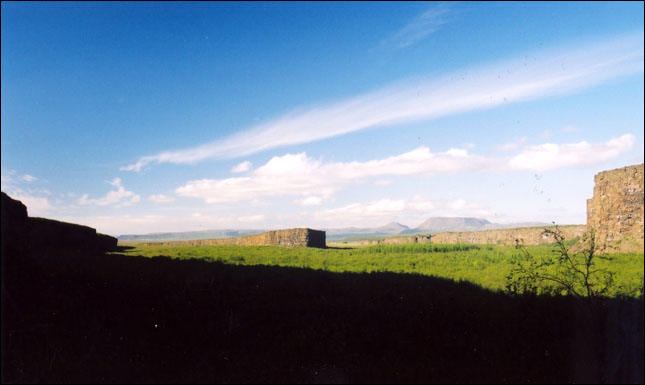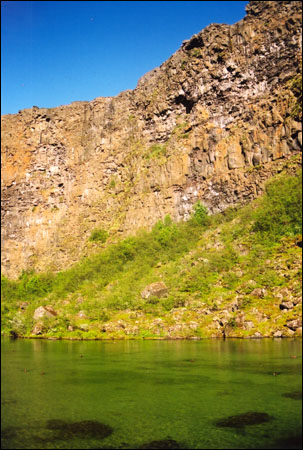Iceland: Day 12 - Ásbyrgi
July 6, 2004
Ásbyrgi, at the northermost part of the National Park, is a 3½ km long canyon with up to 100 m high walls occupied by fulmars during the breeding season. In its middle is a freestanding and precipitous rock called "The Island". The result is a horseshoe shape. According to Norse mythology Ódinn, the chief pagan god, was once riding his eight legged horse Sleipnir around the world and it put down one of its legs and created this hoof like expression in the landscape.
Of course the scientists will tell you the canyon was created by two catastrophic flood waves from the icecap Vatnajokull far in the south, the first one about 8-10 thousand and the second about 3000 years ago. These floods (jokulhlaups) were caused by volcanic activity under the ice cap. Pressure built up until water was suddenly released from under the ice, resulting in destructive floods downstream. (Personally, we like the version with Odin and his horse better!)
The well vegetated area between the canyon walls is a very popular recreational area, especially among families, and local festivals are celebrated there. The canyon is partly wooded, mainly with birch, willow, larch and fir. We tried to get a good view of the horseshoe canyon from above but the Áshöfði trail ended up being a bit of a disappointment - for the first time in Iceland, our view was obstructed by too many birch trees!

From the end of the Ásbyrgi canyon which forms a horseshoe around the 'island' in the middle.
The cliffs of Ásbyrgi are a favourite nesting spot for fulmars.
Some of the ducks of the Ásbyrgi canyon.

A crystal clear lake at the end of Ásbyrgi where the birds hang out.
Chirp! Chirp!
[ Iceland Vacation Home Page ]